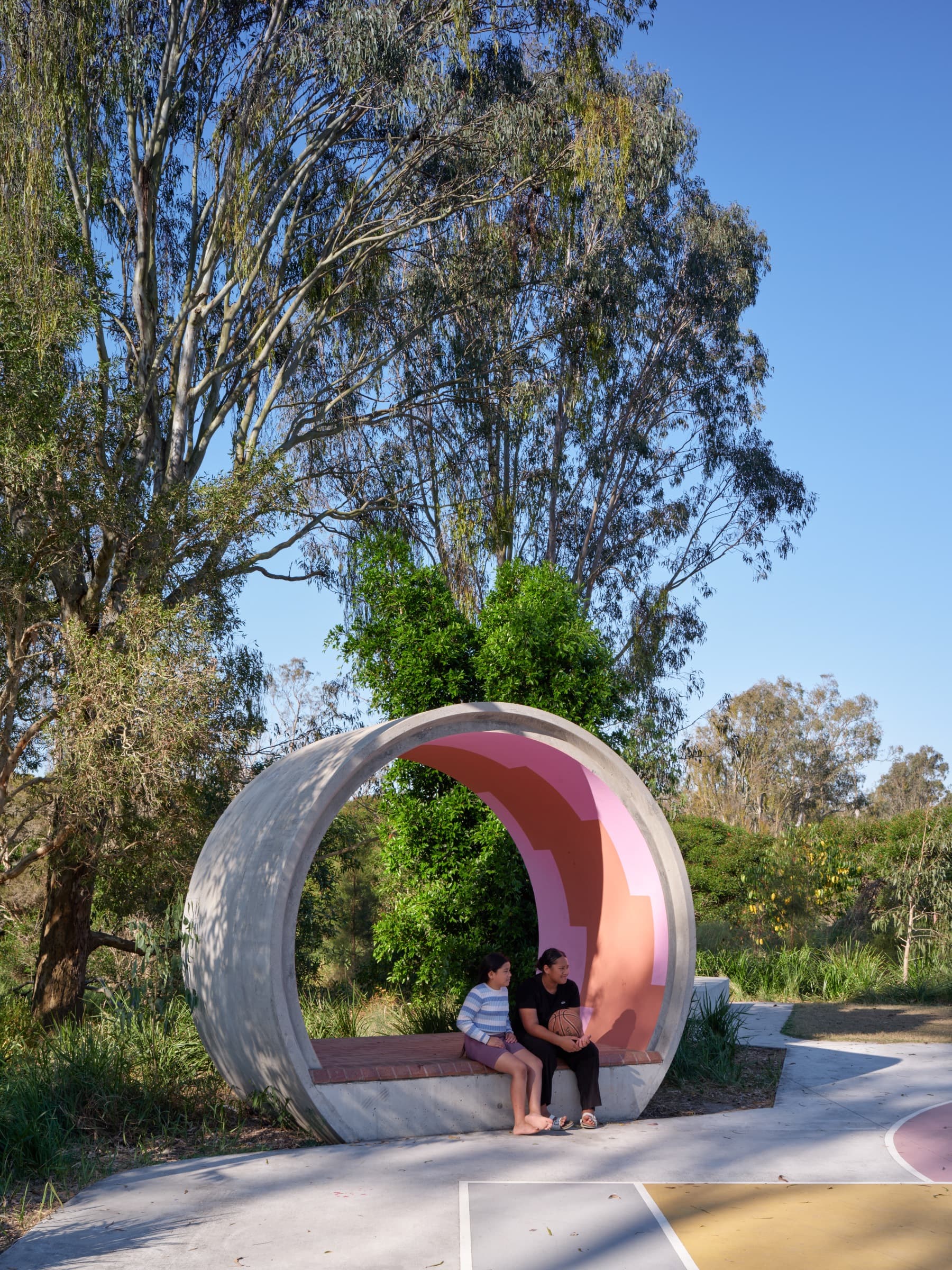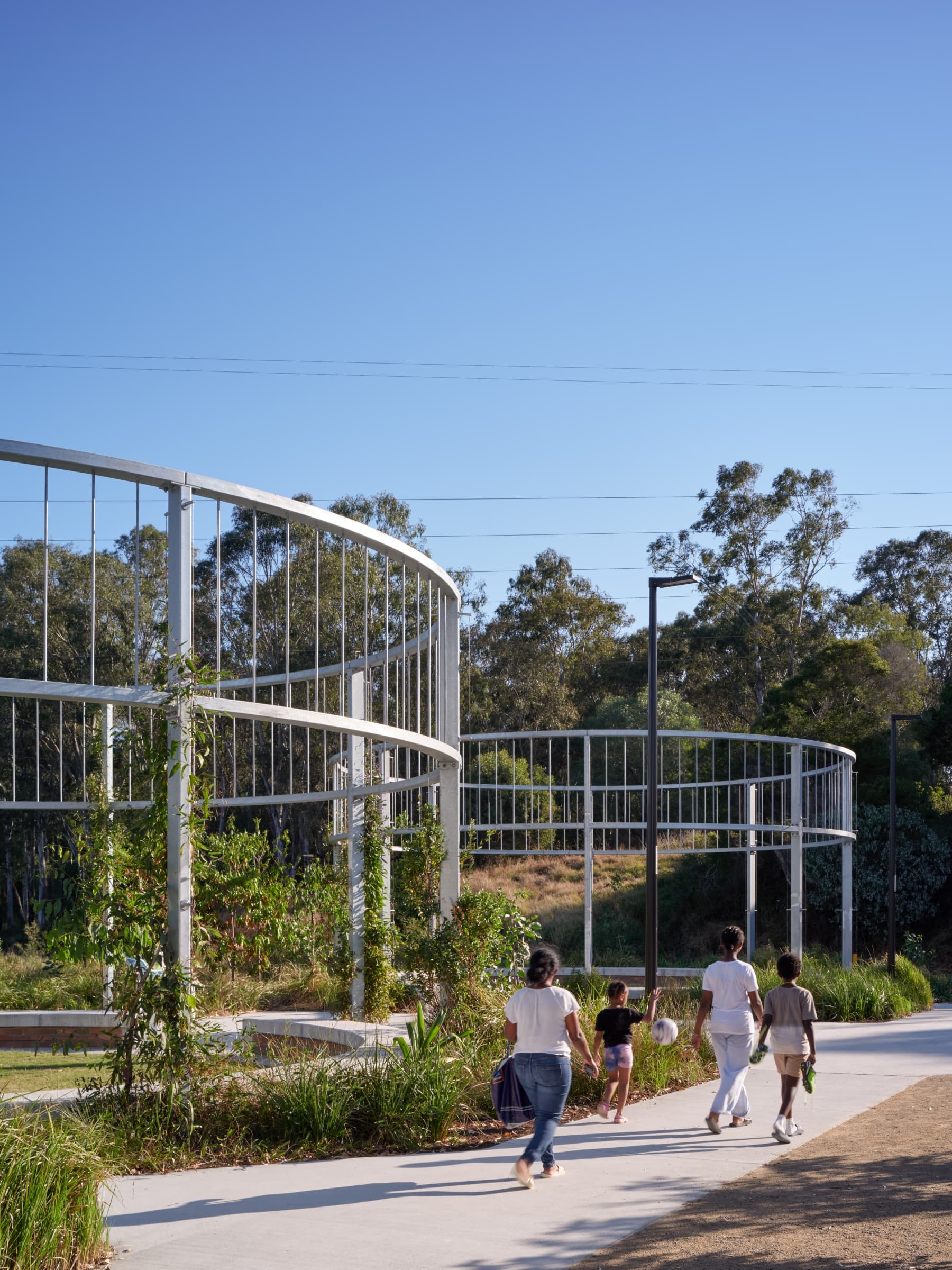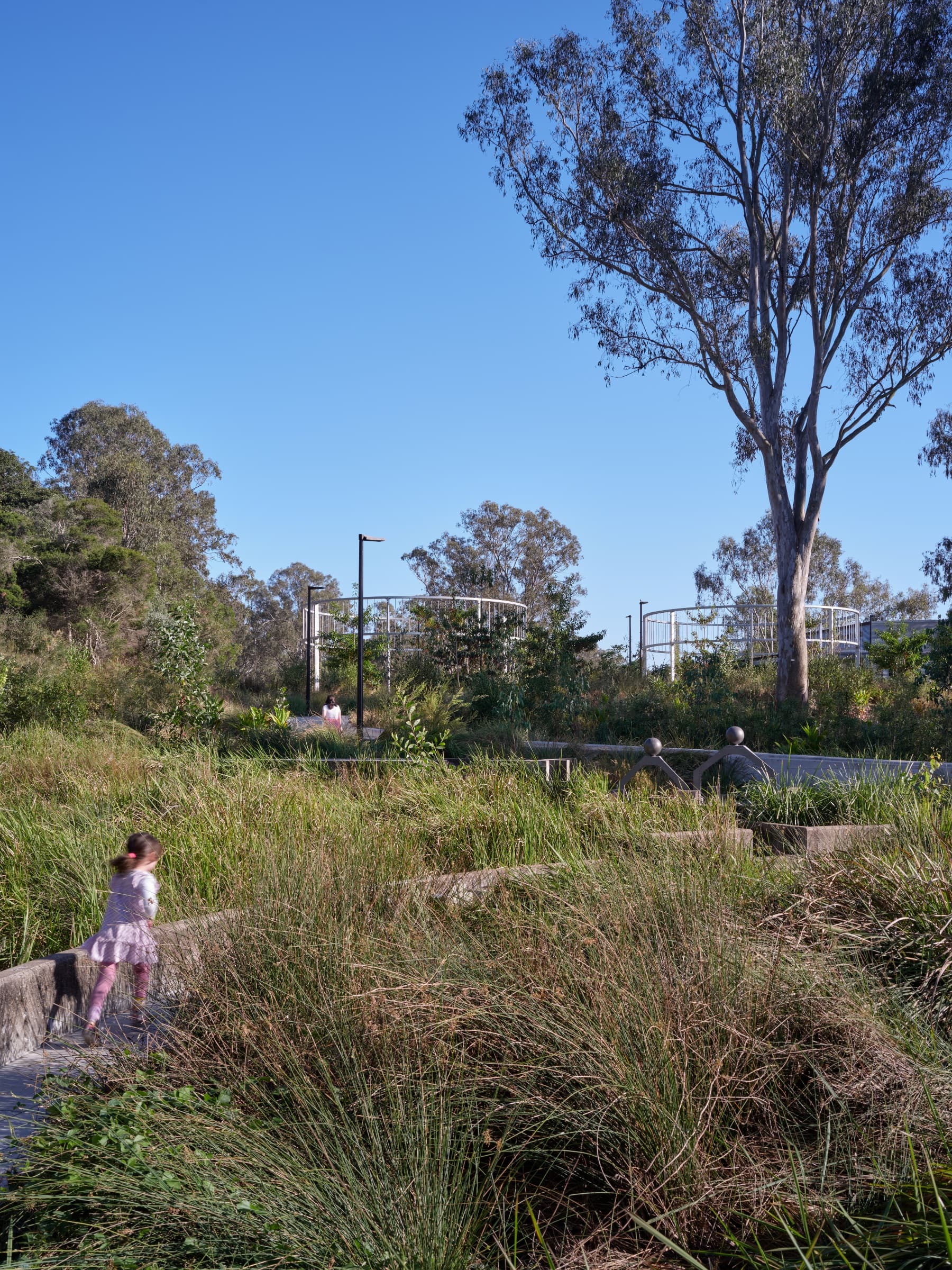
Archerfield Wetlands District Park
Client:
Brisbane Sustainability Agency (BSA)
Awards:
2025 AILA National Landscape Architecture Award for Play Spaces 2025 AILA QLD Award of Excellence for Parks and Open Space 2025 AILA QLD Award for Play Spaces 2025 PLA QLD Park of the Year 2025 PLA National Park of the Year Finalist (Winner TBA)
Capabilities:
Adaptive reuse
Archerfield Wetlands District Park, located 12 kilometres from Brisbane’s CBD, is part of the 150-hectare Oxley Creek Transformation Master Plan. The site was formerly a sewage water treatment plant, left with significant contamination and remnants of industrial infrastructure both above and below ground. The landscape was a mix of mature trees and wetland species overrun by invasive weeds, interspersed with concrete water tanks and steel valves.
Delivered as part of the broader Oxley Creek Transformation project for the Brisbane Sustainability Agency (BSA), we led a large, multidisciplinary team of consultants over a five-year period to bring this ambitious vision to life. From the outset, the goal was to design a parkland that inspires people of all ages to connect with each other and with nature, care for the environment, and embrace a healthy, outdoor lifestyle.
A hallmark of the project was the decision to repurpose the remnants of the site’s former wastewater treatment plant rather than demolish them. Concrete tanks, channels, and other industrial structures were creatively integrated into the park’s landscape, serving as seating, feature gardens, and stormwater treatment basins. This approach preserved the site’s historical character, minimised waste, and reduced the environmental impact of construction - turning what could have been discarded into distinctive, functional assets.



Community and social impact
We were engaged by the Brisbane Sustainability Agency to lead the master planning and transformation of the site, continuing our involvement through to project delivery. Our team of urban designers and landscape architects worked alongside sustainability experts and community-focused architects to restore the site’s ecological health and create a welcoming public space. The design balanced environmental restoration with the creation of high-quality community facilities, ensuring the park would serve both ecological and social purposes.
The park offers a wide range of facilities that cater to diverse community needs and encourage active lifestyles, including an industrial-themed adventure play space, a youth hub with a dedicated area designed for young females, meeting places and market/food van areas, large and small shade structures, a kick-about lawn, and shared walking and cycling facilities. At the heart of the park is the Wetlands Community Hub building, which includes a bookable event room and serves as a focal point for community gatherings and environmental stewardship.
The integration of new facilities for the Oxley Creek Catchment Association (OCCA) within the Wetlands Community Hub has brought significant benefits to the broader environment. These facilities act as a base for environmental education, community engagement, and stewardship activities, fostering a deeper connection between the community and their natural surroundings. This collaboration supports conservation programs, habitat restoration projects, and educational workshops, ensuring ongoing care and monitoring of the wetlands.
Archerfield Wetlands District Park has become a valued community asset, offering spaces for recreation, education, and connection with nature. Amenities such as picnic shelters, barbeque facilities, and access to the Discovery Trail encourage year-round use. The transformation sets a benchmark for future parks and open spaces, contributing to the resilience and liveability of Brisbane, and demonstrating that with vision, innovation, and partnership, urban spaces can be transformed into thriving, inclusive environments that benefit both people and nature.


Ecological healing
Through innovative and ecologically sensitive design, the project transformed a degraded brownfield site into a dynamic public space that enhances Brisbane’s liveability and fosters a strong sense of community. The revitalised parkland now features diverse habitats - including eucalypt forest, open grassland, freshwater wetlands, and creeks - supporting over 150 bird species.
The planting of 67,000 new trees, shrubs, grasses, and groundcovers has significantly enhanced biodiversity, creating habitat for local fauna and improving stormwater management. The park’s design prioritises flood resilience, with durable, low-maintenance materials used for structures and hard landscape elements. Stormwater is managed through vegetated swales, detention basins, and water tanks, reducing erosion and pollution in the wetlands and Oxley Creek.
The design also reflects a deep respect for the cultural heritage of the Yuggera Ugarapul People. Working under a Cultural Heritage Management Agreement (CHMA), archaeological assessments were undertaken to protect and celebrate the site’s Indigenous heritage. In collaboration with the Yuggera Ugarapul People, the Bush Resources Garden was developed, showcasing endemic plants used for food, medicine, and equipment manufacture. This space provides opportunities for cultural education, connection, and storytelling, ensuring the park is not only a place for recreation but also a living repository of cultural knowledge.
The transformation of Archerfield Wetlands District Park from a degraded industrial site into a vibrant, sustainable green space is a testament to the power of collaboration and strong design leadership. By prioritising sustainability, cultural heritage, and community needs, the project enhances local biodiversity, fosters community pride, and strengthens the relationship between people and their environment - ensuring future generations can enjoy, learn from, and be inspired by this remarkable place.














